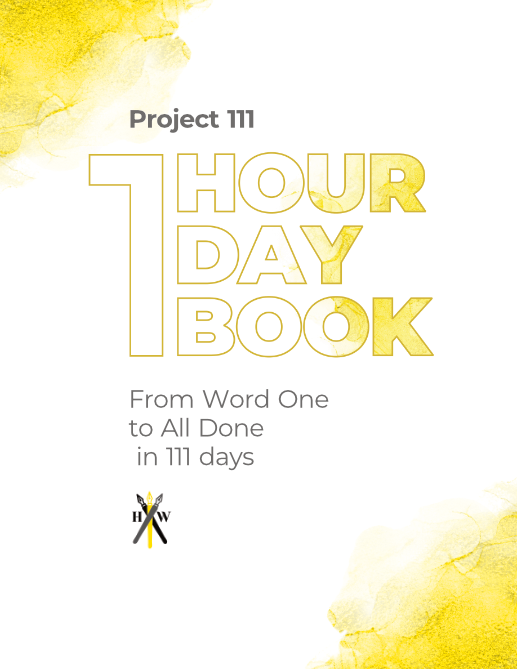Everybody loves a good villain for so many reasons. They push the story forward, they heighten the conflict, and they can be the coolest, most interesting characters.
Take a look at Star Wars. Darth Vader is one of the most famous villains of all time, with one of the most often quoted (and infamously misquoted) lines of cinematic history.
People love the Joker from The Dark Knight because of his evil mentality, his chaos, and his direct opposition to the hero, Batman.
But did you know that the main character, can also be a villain protagonist? You probably did, given that Avengers: Infinity War broke multiple box office records.
Thanos, that purple and villainous cosmic entity, is the main character and villain of that movie (even according to Kevin Feige).
Or maybe you’ve enjoyed Megamind, Death Note, The Lies of Locke Lamora, Breaking Bad, or Succession. All these stories sport a villain protagonist.
So, given the precedent for these engaging stories, is it something you should do?
We here at Habit Writing answer with a resounding and unequivocal YES. Villain Protagonists can give way to extremely dynamic stories and intriguing character work.
So how do you do it? How do you make an excellent villain protagonist? We’ll give you five hacks to help you on your way to villainy.
Table of Contents
1. Likability Is Key (and Probably Easiest)

In order to make your main character as a villain work, you need to be sure they have likable traits despite the bad things they do.
Let’s go back to the example of Megamind. His goals are quite obviously evil: global domination, defeating Metroman, the enslavement of Metro City, etc.
But why do we cheer for him even though we (hopefully) don’t have those same goals?
We’re fans of him because despite his evil intentions, he makes us laugh. Even though he’s not strictly capable, we love how he “would almost win” his fights.
Like all protagonists, you want to color your villain with personality. Doing this will make the character a joy to read, and people might even forget they’re a villain. You can make them funny, witty, goofy, incredibly smart, super capable, extremely lucky, or any number of attributes along these lines.
Certainly, make your character murder if that’s the type of wicked they are. Make them psychotic and full of flaws, but make sure they have redeeming qualities. Doing so will invite the reader to relate to them in a potentially unnerving way.
2. Have a Character Arc

Static characters are incredibly difficult to write well and can be difficult for a reader to enjoy. When it comes to villains, we’ve been trained to expect that unchanging behavior in the antagonists.
Think about every episode of Scooby Doo. The villain gets unmasked at the end and doesn’t beg for forgiveness or show remorse. What do they do? They say they would have kept on doing all the bad things that led them there “if it weren’t for [those] meddling kids.”
Reading a Scooby Doo villain as a main character would bore your readers and probably never be made into a TV show.
When writing a villain as your protagonist, having an arc will invest the readers in the character, waiting on their every action, expecting something of them.
There are many kinds of arcs you can write for your character that will captivate your readers: revenge arcs, moral arcs, emotional arcs, etc.
The important thing is that you have progression of some sort for your character. Maybe you have your character start by shutting everyone out, murdering whoever disagrees. By the end of the book, that murder-mongering evil criminal of a person should have something like two friends, or at least an end scene of them holding a very small kitten.
Revenge arcs have a strong foothold in all sorts of stories, and as long as you have strong characters and good motive for revenge, this sort of arc can really solidify your character as a villain and promote some thrilling action.

Our 84-page book planner and 111 day writing course.
3. Write a Driving Backstory

Modern stories have (mostly) sloughed off the old concept of pure good and pure evil. Readers, watchers, and players expect their protagonists and antagonists to have both moral and immoral qualities.
But an absolute necessity for writing a villainous protagonist is a compelling backstory that will help justify the immorality of their actions. Sometimes you can get away with heroes who are innately moral, but with villains, the backstory should drive the decisions they make.
When you write a good backstory, the villainous main character will seem less villainous because the reader understands why they do what they do. When done right, padding your characters’ backstories should make them more readable.
By no means should you make a hero of your character (unless they see themselves as such), but a compelling backstory will make a compelling character.
Ask yourself questions about your character to humanize them. Things like, what led them to their greatest fear? What did their childhood look like? When did they feel the most hurt?
Maybe their abusive parents have led them to become abusive themselves. Maybe their spouse died in a horrific way and the emotional pain shattered their mental state. The options for torturing your make believe character are endless!
4. Every Villain Protagonist Needs a Heroic Antagonist

Okay, that’s not entirely true. Sometimes your main character villain needs to battle it out against another bad guy, maybe society as a whole, or just a good old-fashioned hero.
Just because you wrote a villain protagonist doesn’t mean a knight-in-shining-armor-hero needs to stand in their way.
But something does need to stand in the way of your protagonist, and he/she/it/they should be just as well written and developed.
Conflict pushes every story forward and one way to engage the reader and really commit them to your villain is to have a conflict like you wouldn’t believe (Check out this article about conflict).
For example, I remember reading The Lies of Locke Lamora and really enjoyed the writing. It was lush and quippy, and the character was likable enough, but the beginning mostly went without conflict.
The “hero” of the story is a thief without any moral motivation so we could easily deem him an antihero or even a villain protagonist.
The story didn’t suck me in until we figure out who the antagonist is, and then it felt like the only stop on this rollercoaster of awesome storytelling was landing in my top five favorite books of all time.
Finding your perfect antagonist for your perfect villain main character can skyrocket the success of your story, making it an entertainment-inducing powerhouse.
5. Make Your Character Unique

If these previous suggestions don’t work for your character, or you just want to add more to them, making your villain protagonist unique is another excellent way to gain reader interest.
Maybe you’ve decided to go down the pure evil route, creating the most unlikable character, destroying their backstory, ignoring their antagonist, and making them as flat as can be.
You can still redeem this protagonist by giving them something no other characters have.
This uniqueness can intrigue the readers to follow a character that may otherwise not interest them, but it could also greatly improve an already interesting character.
You might give your character a magic system that no one else has. Maybe they have access to different resources that allow them to have a competency beyond other characters.
Maybe they’re the only one without some sort of magic, and they have to learn to overcome the power disparity (which sounds a lot like a character arc…).
All this is to say that when you make your main character distinct, they have more of a pull, a gravitational energy if you will, especially if you give them the ability to fly.
In Conclusion…
Writing a story with a villain protagonist can be a rewarding experience and help you upset your narrative conventions. Not only could this activity stretch you as a writer, it could help you find your niche.
When writing your new evil main character, these suggestions should prepare you during the character creation process.
Most important to remember when writing one of these characters is to keep them entertaining and readable.
The difference here is the balance between evil acts and ensuring that readers enjoy spending time reading from the villain’s perspective.
Most often, authors create villains that the reader should hate in order to endear them to the hero. In this case, you want to make someone who should be hated loveable.
If you can’t make the character loveable—or even likable—the backstory, moral grayness, character arc, antagonist, or uniqueness can really help you form a character who will seize the hearts of your readership, whether with tact or some supercharged, galactic laser beam trained on their houses.
For more helpful writing habits, stick with us here at Habit Writing!
gavinwride
Gavin is a fantasy author, short story enthusiast, and nature lover. When he’s not reading, writing, or exploring the outdoors, he is likely playing games. His board game collection is probably too big for someone living in a small apartment, and he has enough yet-to-be-played video games to fill a lifetime. His favorite book is "The Name of the Wind". His favorite author is Edward Abbey. His favorite game is "Dark Souls III", and he’d be more than happy to spend the day talking about lore, bosses, and game mechanics.
Our 84-page book planner and 111 day writing course.
